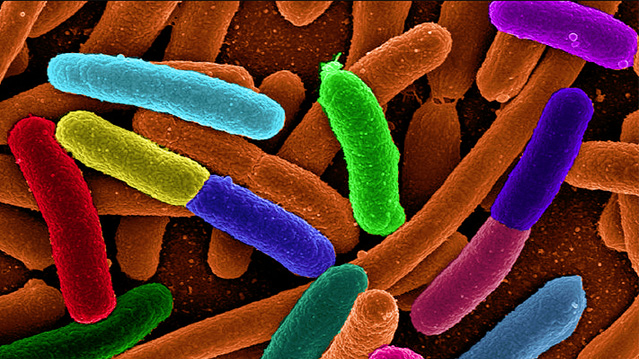But these new experiments are different. This is changing the language of life so we can make a living thing do things nothing living has yet been able to do. Maybe this is even the start of intelligent design…
A big reason this is all possible is because nature has given us a very simple template to work with. Not only does the genetic code have just four letters and 64, three letter words, but many of its words also have the same meaning. It is this last point that has allowed researchers to futz with the code.
The researchers plan to teach bacteria a new language by co-opting one of the words in the genetic code and giving it a new meaning. There are two things scientists need to do to make this happen.
The first is to replace all instances of one word in the bacteria’s genes with an equivalent word. Now the bacteria’s genes all still code for all the same things but a word has been freed up so it can be given a new meaning.
The second step is to redefine the replaced word. This will probably be done by mutating the cell’s reading machinery using some pretty well established genetic techniques.
Church’s group has nearly finished the first step. They managed to create four strains of bacteria each with ¼ of all 314 instances of TAG changed to TAA. They are now in the process of combining these four strains in such a way to generate a single strain with no functional TAG’s. After this first step is done (which should be soon), this group of researchers will be ready to teach these bacteria a new language.
An easy first thing they can do is to change the definition of the TAG so it means the same thing as one of the other words. So the TAG will no longer mean STOP but instead will mean Met or Lys or some other amino acid. (The genetic words or codons really just tell a cell which amino acid to put where in a protein.)
Done correctly, this would probably make the bacteria immune to viral infection.* Which would be a boon for the biotech industry as it loses millions of dollars every year because of infected bacterial strains.
This is pretty pedestrian stuff though. The cool thing will be when they redefine TAG as a word that isn’t already in the genetic code. Then we’ll be able to easily create different proteins with properties useful as medicines, industrial enzymes or who knows what else. At least that is the hope.
And this is just one word. There are another 30-40 codons that may be able to be freed up and given new meanings as well.
We are stepping into a whole new area of research. We are retraining life to do what we want. Let’s hope we know what we’re doing…
*This is because viruses use a cell’s machinery to read its own genes. If the machinery changes, the virus will misread its own genes and die.

